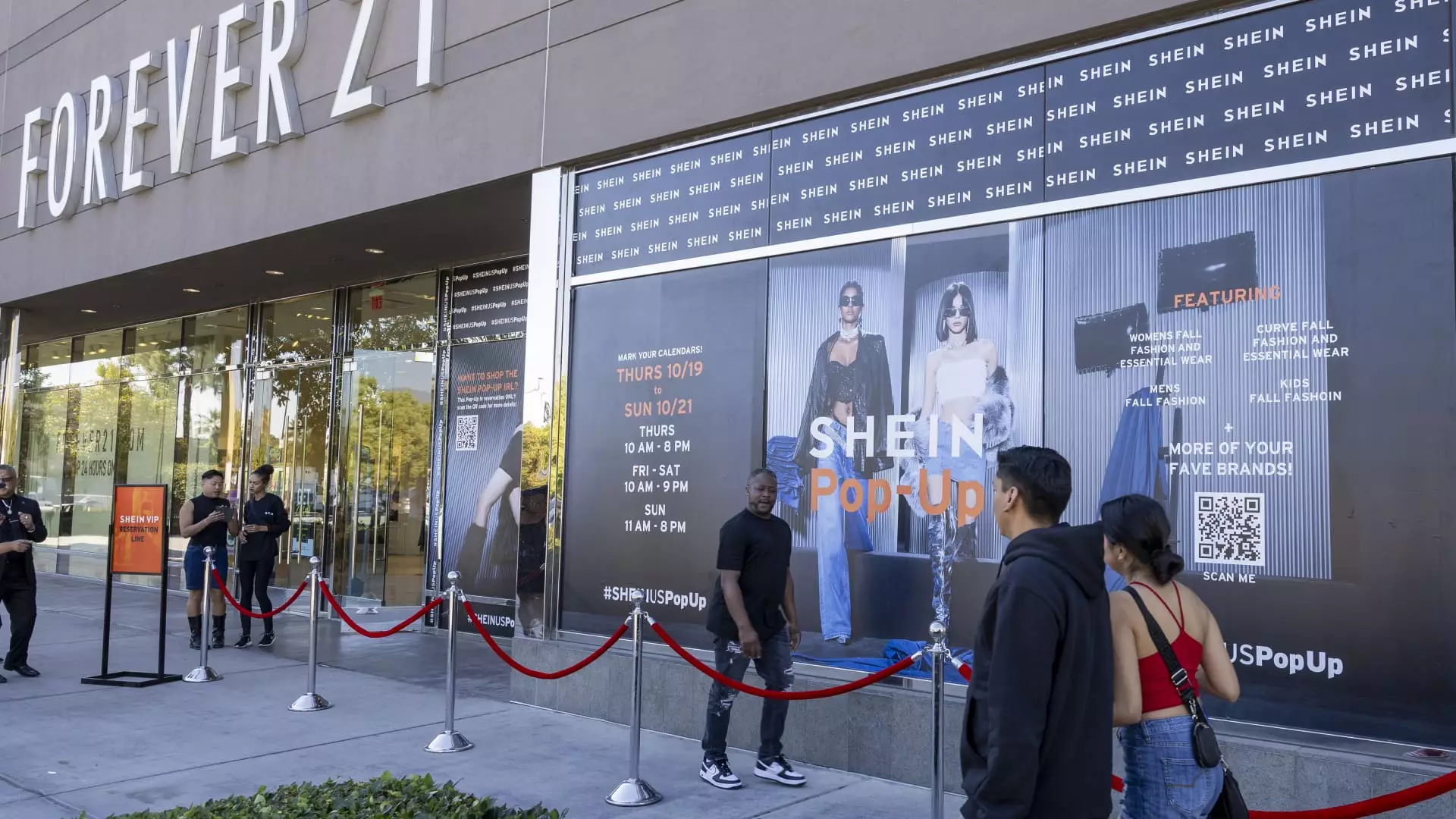Forever 21, once a fast-fashion powerhouse with over 800 global locations, is now asking for a 50% rent reduction from landlords due to declining sales and fierce competition. The company’s failure to adapt to changing consumer trends and manage its inventory efficiently has led to its current predicament. Despite its financial woes, Forever 21 has yet to seek bankruptcy protection for the second time, but it is actively working to restructure its leases to cut costs and stay afloat.
The retailer’s struggles stem from operating in an oversaturated fast-fashion market, where competitors like Shein and Temu have disrupted the industry with their ultra-fast fashion model. Forever 21’s inability to keep up with these new players in terms of speed and quality has put it at a significant disadvantage. Even after closing hundreds of stores post-bankruptcy, the company’s financial position has not improved, affecting the performance of its operator, Sparc Group.
Late Payments and Competition
Late payments to vendors have also been a recurring issue for Forever 21, indicating underlying financial troubles. Compared to industry averages, Forever 21’s payment patterns have been inconsistent and at times significantly overdue, painting a grim picture of its financial health. Furthermore, the rise of on-demand manufacturing companies like Shein and Temu has posed a significant threat to traditional retailers like Forever 21, making it almost impossible to compete in today’s market.
Authentic Brands CEO Jamie Salter admitted that acquiring Forever 21 was a grave mistake, attributing it to underestimating the competitive landscape dominated by companies like Shein. Salter’s acknowledgment of Shein’s superior supply chain and market understanding highlights the missteps that led to Forever 21’s downfall. The partnership between Forever 21 and Shein, while initially promising, has not been enough to revive the former giant’s fortunes.
The Future of Forever 21
As Forever 21 grapples with its financial challenges and the success of Shein’s pop-up stores, questions arise about the fate of the once-thriving retailer. While some speculate about a potential takeover by Shein, others believe that the digital giant’s lack of physical retail experience may hinder such a move. Forever 21’s struggle to adapt to the evolving retail landscape serves as a cautionary tale for companies looking to thrive in the fast-paced world of fashion.
Forever 21’s rise and fall offer valuable lessons for retailers about the importance of staying agile, understanding market trends, and embracing innovation. As the retail landscape continues to evolve, companies must be willing to adapt or risk facing the same fate as Forever 21. By learning from its mistakes, industry players can navigate challenges more effectively and build sustainable businesses in an increasingly competitive environment.

